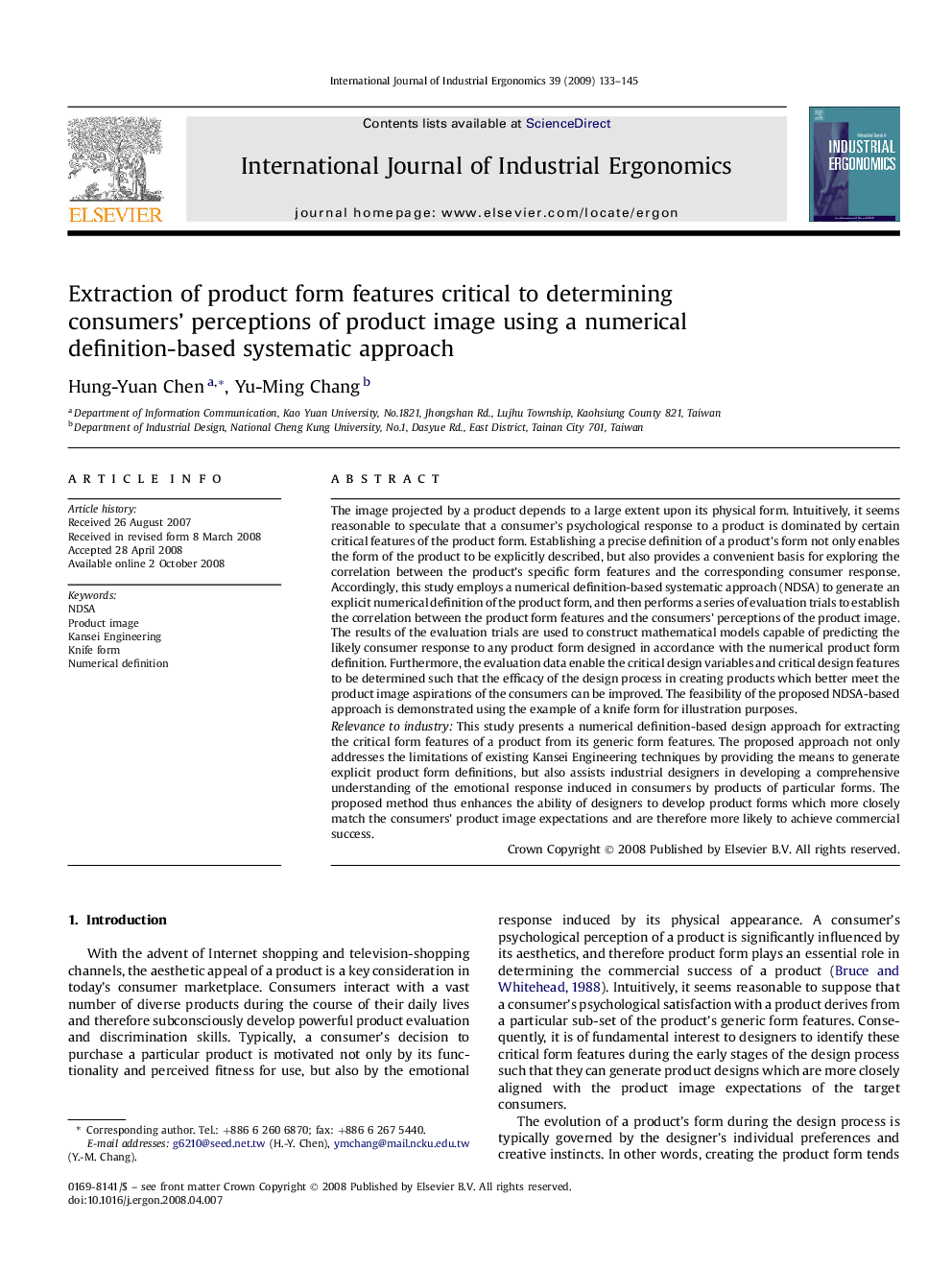| Article ID | Journal | Published Year | Pages | File Type |
|---|---|---|---|---|
| 1096261 | International Journal of Industrial Ergonomics | 2009 | 13 Pages |
The image projected by a product depends to a large extent upon its physical form. Intuitively, it seems reasonable to speculate that a consumer's psychological response to a product is dominated by certain critical features of the product form. Establishing a precise definition of a product's form not only enables the form of the product to be explicitly described, but also provides a convenient basis for exploring the correlation between the product's specific form features and the corresponding consumer response. Accordingly, this study employs a numerical definition-based systematic approach (NDSA) to generate an explicit numerical definition of the product form, and then performs a series of evaluation trials to establish the correlation between the product form features and the consumers’ perceptions of the product image. The results of the evaluation trials are used to construct mathematical models capable of predicting the likely consumer response to any product form designed in accordance with the numerical product form definition. Furthermore, the evaluation data enable the critical design variables and critical design features to be determined such that the efficacy of the design process in creating products which better meet the product image aspirations of the consumers can be improved. The feasibility of the proposed NDSA-based approach is demonstrated using the example of a knife form for illustration purposes.Relevance to industryThis study presents a numerical definition-based design approach for extracting the critical form features of a product from its generic form features. The proposed approach not only addresses the limitations of existing Kansei Engineering techniques by providing the means to generate explicit product form definitions, but also assists industrial designers in developing a comprehensive understanding of the emotional response induced in consumers by products of particular forms. The proposed method thus enhances the ability of designers to develop product forms which more closely match the consumers’ product image expectations and are therefore more likely to achieve commercial success.
